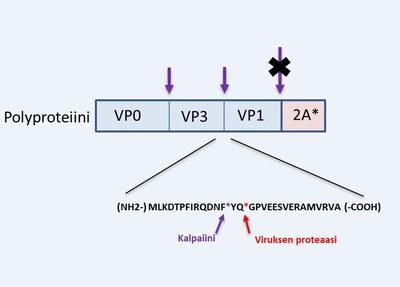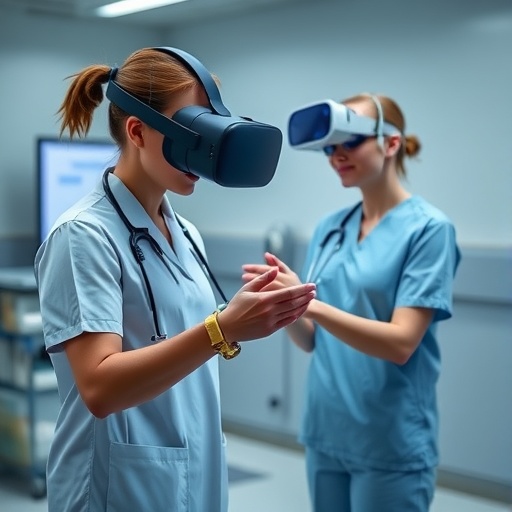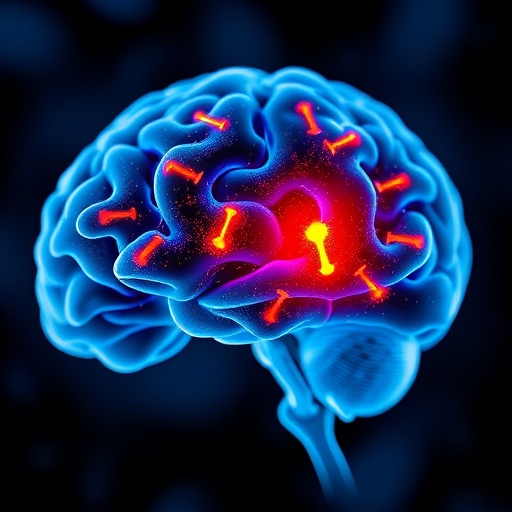
Credit: Varpu Marjomäki/University of Jyväskylä
It has long been suggested that a cell protease could take part in enterovirus infection. However, the identity of such proteases have remained unknown. The work performed in the University of Jyväskylä shows, for the first time, that host cell calpain proteases can process enterovirus polyprotein in vitro. The research was published in Viruses scientific journal in November 2019.
Enteroviruses are the most common viruses infecting humans. Although most of the diseases that enteroviruses cause are symptomless or mild, enteroviruses can also cause more severe diseases.
Calpains are common host cell proteases, ubiquitous in the cell cytoplasm. The group of Docent Varpu Marjomäki has shown earlier that inhibition of calpain proteases very efficiently stops enterovirus infection. The work done now sheds light to the mechanism of the inhibitory effect. The work suggests that enteroviruses have learnt through evolution to take advantage of the cellular resources for their own benefit.
“We showed that calpain proteases can cut out viral capsid proteins from the larger polyprotein, and thus have the potential to contribute to the assembly of new viruses”, says Docent Varpu Marjomäki.
The work done is very interesting as suggested by the eminent virologist Dr. Marco Vignuzzi from Pasteur-Institute, Paris.
“I consider this an outstanding observation and very significant first demonstration that will lead to significant advances in the field. It may very likely be that this mechanism of cleavage is also used by viruses in other viral families”, Vignuzzi says.
According to Vignuzzi the work is to be considered to be one of the most interesting things that will be published this year in picornavirus research. This work was part of Mira Laajala´s dissertation at 22.11.2019 in Marjomäki´s group. Laajala showed further that calpain proteases have cross-reactivity against viral proteases as well. Inhibition of calpain proteases thus offers a future possibility to develop anti-viral therapies based on calpains.
###
The new research was done in collaboration with the researchers Minna Hankaniemi, Juha Määttä, Vesa Hytönen and Olli Laitinen in the University of Tampere. The work has been supported by Jane and Aatos Erkko foundation in the University of Jyväskylä.
Link to the article in Viruses-journal: https:/
For further information:
Docent Varpu Marjomäki [email protected], tel. 040 563 4422
Communications officer Tanja Heikkinen, [email protected], tel. 050 581 8351
https:/
Facebook: jyuscience Twitter: jyscience Instagram: jyscience
Media Contact
Docent Varpu Marjomaki
[email protected]
358-405-634-422
Original Source
https:/
Related Journal Article
http://dx.




